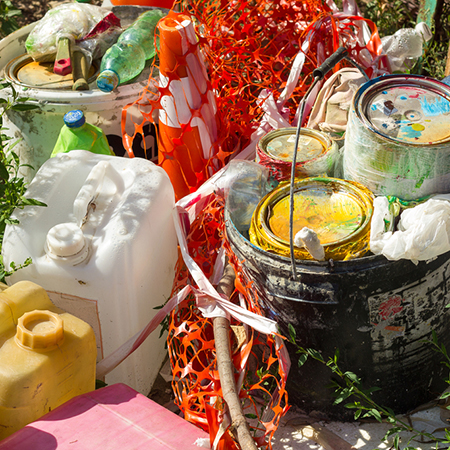Make Every Drop of Paint Count
Rather than throw away any leftover paint, here is a great tip for using any paint you have leftover from a project and also how to safely dispose of paint.
02/04/2023
After a random touch-up painting job that needed to be done in the house, I caught the decorating guy pouring leftover paint down the drain outside my kitchen! Makes you wonder how many other people do the same thing. We know that today's acrylic paints are water-based and that makes them safe, right? That is not exactly the case. These paint still contain chemicals that are harmful and will contaminate the water as well as the fact that the paint will form a clump that can block drains warns Redsail Management Team. Even when very liquid, the paint sticks to the side of pipes and will accumulate and attract other debris particles and lead to a blockage.
As with many other DIY products, paint should never be flushed down a toilet or poured into a drain, as this may well cause blockages.
• Practical uses for leftover paint
In this article, we draw particular attention to leftover acrylic or emulsion paints that are water-based and not oil-based or solvent-based paints or primers.
-
Primer coat
- If you need to paint over a wall in a bright or dark pant colour, using leftover paint as a primer coat will cut down on how much top coat paint you will need to purchase, effectively saving you money while putting waste paste to good use.
-
Craft paint for kids
- Today's paints are acrylic, which is the same as most craft and hobby paints these days. This means that you can easily use leftover paints for kid's crafts and hobbies - simply add a few drops of food colouring to stain the paint in any colour you want.
-
Add some colour in the garden
- Painted flower pots, colourful fence slats, a bright garden shed or Wendy house, and even a blank wall in the garden, many acrylic paints are rated for both indoor and outdoor use and are great for these types of projects rather than being tossed out.
-
Donate the paint to a worthy cause
- There are plenty of non-profit organisations that would welcome a can or two of paint. Think about any charitable organisation, child or women's hostel, informal childcare centre or school.
• How to dispose of leftover paint (acrylic)
-
Cleaning painting equipment
- If you need to clean paintbrushes, paint rollers or paint trays, remove as much paint as possible before rinsing these under a tap. Only use warm water and dishwashing liquid when washing these items and turn the water hot to rinse out the sink and flush the drain once you are done.
-
Disperse solvents or chemicals
- Pour all leftover paints into a large container - an old HTH bucket is great for this - and let it dry out in the sun. As it dries, most of the chemicals will be released and the paint will harden. This hardened lump can then be placed in your dustbin for removal.
-
Safe removal
- While acrylic paints are not wholly toxic, oil- or solvent-based paints are and that is why it is better to get in touch with a paint disposal company near you, who will arrange to collect the leftover paint and dispose of it safely.








